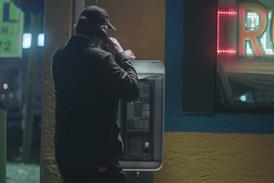Once upon a time, when programmes were shot on tape and the definition of pictures was standard, buying and selling broadcast equipment was relatively straightforward. There were people who bought stuff. And there were people who sold it. It was a pretty linear operation. A manufacturer made a piece of kit. The customers tested it and, if they liked it, ordered it, had it installed and everybody lived happily ever after.
In 2008 the old order of things has changed. That straight line from maker/seller to buyer/user has been replaced by a triangle. At one corner is the manufacturer. At another is the user. But at the third is any number of intermediaries offering an increasing host of services, goods and information. These include the dealers and resellers but also consultants, systems integrators, agents, procurement departments, technical advisors and more.
This change has been brought about principally by the move to a more complicated broadcast world where interoperability between different products and IT-based workflows are part of the challenge of getting a picture from the camera lens to the screen.
The increased complexity of this process has made it harder for the broadcast engineer, production manager or camera owner-operator to know absolutely everything. As a result, some of the equipment-buying technical know-how has been mopped up by third parties.
“Customers find it extremely expensive to employ people who do nothing but technology,” argues Adrian Scott, founder of the Bakewell House Consultancy and chief marketing officer at router manufacturer Pro Bel. “They want operational people and they want creative people. They don't necessarily want to have to pay lots of money to engineers who wait around for something to go wrong.”
Reseller channels
The three big acquisition equipment manufacturers - Sony, Panasonic and Thomson Grass Valley - all have similar routes to market. Each sells direct. Each has reseller/dealer channels. And each has relationships with systems integrators. And, in nearly all cases, they supply different bits of equipment to the same customer in all three ways. It usually depends on what the product or system is.
Resellers/dealers are independent. They buy goods from a manufacturer and resell them to customers, pretty much unchanged. They help to extend the manufacturers' reach by developing relationships with more customers than a manufacturer can alone and they provide “value added” resources such as a wide product range, technology integration and a more objective opinion than has traditionally been available from manufacturers.
And while reseller channels are not new, subtle nuances have crept in. “The customers can buy from whomever they wish,” explains Mark Bainbridge, general manager of media channel sales and professional services at Sony who oversees 12 authorised Sony dealers. “We have to maintain a direct relationship with the major production and post companies and broadcasters [via our Sony direct account managers]. But that does not necessarily mean that customers perform a direct transaction with us. Sony direct account managers carry out more of a business development or evangelising role rather than overseeing a transactional process. Even the BBC buys the majority of its boxed products through a reseller channel.”
Thomson Grass Valley has seen the importance of the reseller grow. “Historically, major broadcasters wanted to go direct [to the manufacturer],” says Phillip Neighbour, broadcast and networks sales director for the UK and Ireland. “But now Thomson is selling via third parties.” This is partly, Neighbour points out, because of the blurring between the broadcast and professional AV market. He cites the example of the Turbo digital disk recorder - a replacement for the VTR - which was sold to BSkyB via dealer Mitcorp.
Generally, it is the smaller customers that will go down the reseller route: “The service that a dealer can give to a small or medium-sized enterprise is very attractive,” he says, going on to suggest that big customers are after something more than box shifting. “They are looking for direct access to specialists and product managers to help them to develop workflows and practices to improve their productivity.”
Panasonic, now a genuine player in the acquisition market with the move to tapeless technology and high definition, is very reliant on resellers. “[Our] route to market is predominantly through the dealers,” says UK marketing manager Marc Irwin. “We sold lots of tapeless P2 technology direct to [news operators] Sky, Reuters and Bloomberg but there you have the established route of a technician who sees something is great, tells his boss and they go out and buy a load of it. But the electronic newsgathering market doesn't affect the rest of the industry. They have their own cameramen, their own workflows. They don't flip between genres.”
Integration and interoperability
In 2008, technical versatility is now more important than ever when it comes to selling kit. As broadcasters look to establish new workflows, products made by different companies must talk to each other and use the same bits of data.
This means that, for the good of the customer, manufacturers have to share their secrets and plot their route to market with other kit makers in mind. “Before, the main object was to sell a piece of kit that worked properly,” explains Scott. “Now the emphasis is on making a whole infrastructure work properly. That requires new kinds of co-operation and partnership between different manufacturers.”
Each of the “big three” knows that it has to share. Neighbour says that Thomson regularly releases its protocols to other suppliers. “There are a number of projects in the UK where we are working with companies that could be considered our competitors,” he says. “But we've got to put that to the back of our minds and look at the customers' interests.”
This change from selling a piece of kit to selling a whole workflow means that the skillset of the sales team has to change too - for both manufacturers and resellers.
“Once upon a time it was about which camera achieved the highest picture quality,” says Mark Forth, managing director of reseller CVP-Mitcorp. “Now, with HD taken as read, we get a lot more questions about the workflow. Where does that save us time? If it saves us time, does it save us money? Now my sales guys have different conversations and have to learn things they wouldn't have had to previously.”
Bainbridge says the pace of change - especially with the introduction of IT-based acquisition - alters the whole approach. “Now the sales guys have to go in and understand the customers' workflows and then work backwards to ensure our products fulfil their requirements,” he says.
Technical know-how and educating the user
According to the manufacturers at least, this brave new world has caused a subtle shift in technical understanding. The engineer, with myriad options, now needs some help. So some suppliers are attempting to work as consultants too. Bainbridge says Sony now tries to solve problems, regardless of whether Sony is the answer: “We're doing consultancy projects with some of the major broadcasters now which is something we'd never have done before as people wouldn't have been prepared to pay for it.”
Forth argues that the bewildering array of options makes consultancy a genuine option. “Although we've always taken a consultative approach to selling, we actually now have consultants on staff because some customers are unsure as to what to buy or how it works,” he says.
While Sony and CVP-Mitcorp are able to charge, the general rule of thumb is that consultancy is the domain of the consultant. “I think manufacturers should continue to provide free ‘box understanding',” retorts ITV director of production technology Mark Chaplin. “That means dedicating someone to answer integration questions from back connectors to database schemas so that the ‘box' can sit comfortably within the system.”
Chaplin says he'd rather use internal expertise or one of the big consultancies. “If the manufacturers also want to offer solution consultancy and implementation services as a paid-for option, they need to equip themselves with real-world experience and a wider perspective in terms of technology and market awareness.”
News ways of reaching customers
A combination of relationships and contacts - backed up by marketing and user groups - are still the best tools when it comes to selling kit. But face-to-face teaching is also becoming important.
Panasonic is currently running a training programme called “TV by IT” that is not promoting products but explaining IT workflow. “These days it's about passing on knowledge whether that is through users-forums or training,” explains Irwin.
Sony, its main competitor, now uses exhibitions as a venue for seminars and is doing a UK road show in July that combines product exhibits with learning. “Exhibitions used to be just a stand,” says Bainbridge. “Now we're running seminars so people can understand what the latest technologies are.”
And the internet plays a part too. The Guild of Television Cameramen has an email forum which manufacturers use to answer questions about their equipment. Chairman Brian Rose describes it as a vital resource. “I only wish more manufacturers would take advantage of it,” he says. “It would save a great deal of unnecessary expense and time if they had more open dialogue with the end users.”
Red Digital Cinema takes the online route to extremes. The US company introduced high resolution acquisition technology in 2006 and has built its business around web forums. The company's message is brought to market through regular online “strands” started by founder Jim Jannard. At NAB the Red stand was probably the busiest in the whole show.
Red's Ted Schilowitz, who has the unique job title of Leader of the Rebellion and is both the public face of the company and the person in charge of business development, claims that the buzz around Red was organic. “It comes from the fact that we don't concentrate on creating a buzz at all,” he says. “It comes from making a cool camera. People give us way too much credit for being brilliant marketing geniuses. Yeah, we've got a cool logo and we have a cool method for getting the word out. But it's not brilliant. What is brilliant is what we're building.”
It obviously works from a certain point of view, judging by the 10,817 people that use the company's website, which is also currently the only place to buy Red equipment and peripherals, which are sold part by part, rather than as a single unit. Consultant MC Patel thinks the approach has longevity. “Even though it's got issues and teething problems, they've turned their users into supporters,” he says. “It has ignited a community. The last time I saw a success like that was when [Autodesk] Flame came out.”
But, while this modern route to market creates a buzz, it doesn't guarantee customer satisfaction. Peter Carter, managing director of hire firm Axis Films, was one of the first people in the country to buy a Red camera. He approves of the new technology but thinks that after-sales care should be a priority. “People do want these cameras and, as we can handle them, we are a valuable commodity. But name me another camera that you buy from your dealer without a viewfinder. We are flying by the seat of our pants. This makes it exciting but it doesn't give the client the security that everything is going to work out.”
With new processes and technology, the last thing equipment buyers need is insecurity. Perhaps what is required is a truly independent IT acquisition consultant - someone who can help production departments and owner-operators, not just engineers, to buy the right “content creation tools”. Now that really would be a fairytale ending.
Next week: post-production, systems integration and procurement


























No comments yet